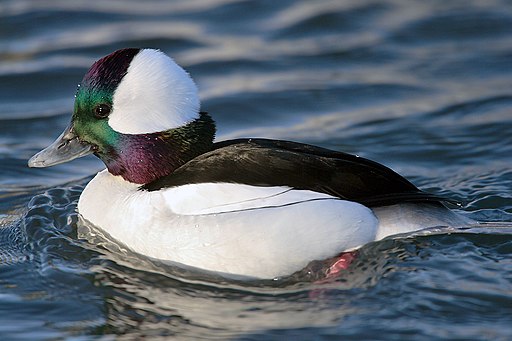
March 02, 2023| Environment
By: Rose Silletto
March 3rd is World Wildlife Day, a day to celebrate and raise awareness for wildlife. The date for World Wildlife Day was chosen as it is the birthday of the Convention on International Trade in Endangered Species of Wild Fauna and Flora (CITES), signed in 1973. This year’s World Wildlife Day is the 50th anniversary of CITES’ signing and the theme for World Wildlife Day this year is “Partnerships for Wildlife Conservation.” Working together, we can turn the tide and make positive change happen for the plants and animals that call the Lake Hopatcong region home.
World Wildlife Day is the perfect time to take a moment to reflect on the fishy, furry, feathered, and flowering members of our community, and this year, we’d like to shine a spotlight on a duck species you have probably seen around the lake but may not know about: the bufflehead duck.
The bufflehead is known for long dives below the lake’s surface to eat and can be confused for the merganser duck. Buffleheads are North America’s smallest diving duck, measuring between 12 and 17 inches in length. They are also one of the fastest waterfowl, able to reach almost 50 mph in flight.
From a distance, the bufflehead and merganser ducks may look similar, but if you know what to look for, it can be easier to spot the differences. Male buffleheads are black and white with iridescent green feathers on their heads. Females and young males are dull brown with a white patch on their cheek. Mergansers differ from buffleheads in two main ways: their feathers are mostly black and brown and they have long and thin beaks, compared to the wide bills of the bufflehead.
Buffleheads like to eat aquatic invertebrates such as crabs and mollusks. In freshwater lakes like Lake Hopatcong, they mostly eat insect larvae, large zooplankton such as amphipods, and snails and clams in the winter. They can dive for about 12 seconds on average and rarely more than 25 seconds. When diving, buffleheads compress their feathers to squeeze out air, plunge below the water, and use their feet to propel themselves forward. When they end a dive, they often bob to the surface like a cork. (You can see them in action in the video below!)
Buffleheads are monogamous, unlike most ducks. During mating season they nest in woodpecker holes in trees, particularly in holes made by the Northern Flicker. You can find between 4-17 cream-colored eggs in a bufflehead nest.
The bufflehead is currently listed by the International Union for Conservation of Nature as a species of least concern, but it does face some threats to its habitat. Bufflehead conservationists are concerned about duck hunting and forest degradation from loggers. Deforestation in the northern US and Canada might lead to fewer mating grounds, which greatly affects the bufflehead since they normally return to the same mating grounds each year.
We hope that learning more about the bufflehead will encourage you to look into other lake wildlife. Change starts by taking the opportunity to learn more about our local wildlife species and how our actions affect them. Together, we can continue to protect and promote the lake that we, and our duck friends, depend on.
Rose Silletto is a Lake Hopatcong Foundation resident volunteer and student at the Rochester Institute of Technology.
Photo: male bufflehead courtesy of Wikimedia.

December 17, 2025
Community, Fundraising, People

December 16, 2025
Community, Environment